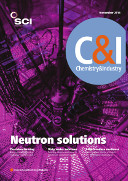Smart windows become darker or lighter in response to sunlight. However, savings are currently limited as they need energy from an external power source: their transparency changes when voltage is applied.
Now, researchers in Singapore have designed a new electrochromic window that uses aluminium and Prussian blue electrodes. The blue colour of the device can be made transparent by connecting the electrodes, but no external power supply is needed (Nature Commun.; doi:10.1038/ncomms5921).
What happens is that aluminium is used to reduce Prussian blue to Prussian white in potassium chloride electrolyte, explains Xiao Wei Sun at Nanyang Technological University in Singapore. ‘The iron inside the compound gets reduced, so that its ionic state changes from +3 to +2. When this happens the material becomes Prussian white, which is transparent.’
Aluminium releases electrons to form Al3+ ions, acting as the electron donor. The transmittance of the smart window changes by about 52% between blue and colorless states.
The device can be turned blue again by simply disconnecting the aluminium and Prussian blue electrodes, whereupon Prussian white is oxidised to Prussian blue by the dissolved oxygen.
‘So this is also a battery, because it stores a charge and releases a change,’ says Sun. ‘You can generate some electricity and we showed this by running a red LED on it.’
‘Direct sunlight coming in the window of high-rise office buildings with glass fronts makes a great contribution to the load on air conditioning. And especially in places like southern Europe and the US this requires a great deal of electricity,’ notes Keith Barnham, physicist and author of The burning answer: A user’s guide to the solar revolution. ‘Electrochromic windows are one way of dealing with this, though in this case there is also a bit of useful energy left over for some interesting applications.’
Material scientist Andre Anders at Lawrence Berkeley National Laboratory, California, US, describes the idea as clever, but doubts it will work as a real electrochromic (EC) window. ‘First, aqueous electrolytes have been ruled out for decades as the difficulties with handling and stability of aqueous electrolytes have been realised – just think about very hot and very cold conditions,’ he says. ‘Second, a practicable EC window that you, as a consumer, would like to have in your house should be proven with a lifetime about 100,000 cycles.’ He also questions how stable the system would be as the smart windows absorb solar energy – ‘the temperature can get high, in my experience it may reach or even exceed 80oC’.
‘I think it is a cute device but without the practical impact,’ says Anders.





